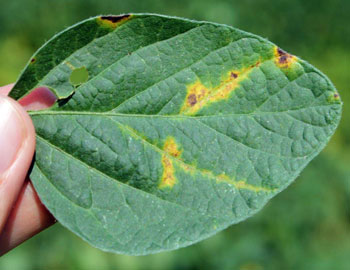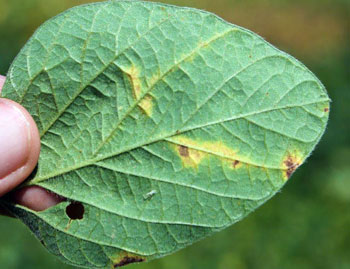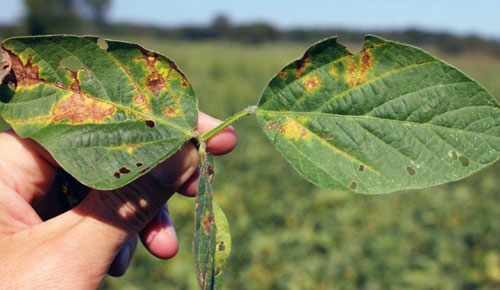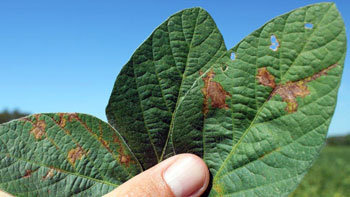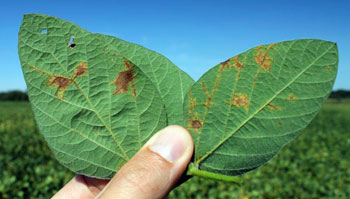Soybean vein necrosis-associated virus (SVNaV) confirmed in Michigan
SVNaV, a new and widespread viral disease of soybeans, has been observed in many Michigan fields during the 2012 season.
Growers and consultants may have noticed peculiar lesions on soybeans this year. The lesions are caused by a new and widespread viral disease called soybean vein necrosis-associated virus or SVNaV for short. We have observed SVNaV in almost every soybean field we have scouted in Michigan this season.
SVNaV was confirmed in Tennessee in 2008, Arkansas, Illinois, Kansas, Kentucky and Missouri in 2009, and New York in 2011. Symptoms initiate as vein clearing, areas next to the vein then yellow and progress into red-brown lesions, resulting in death of leaf tissue (see photos below). The long-term implications and impacts of this disease are not yet known. The virus that causes the disease is a member of the Tospovirus group, members of which are capable of causing serious damage in other crops. As this disease is so new, we don’t know much about how the virus spreads or how it might be vectored, however this family of virus is known to be spread by thrips.
Given that we currently don’t know much about this disease, there are currently no management recommendations.



 Print
Print Email
Email